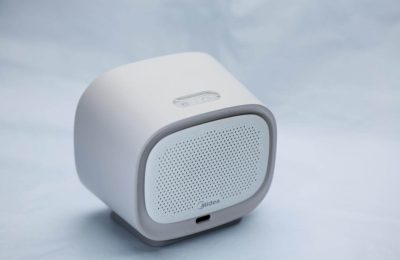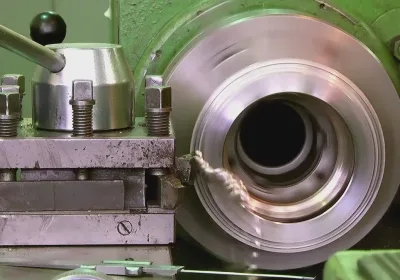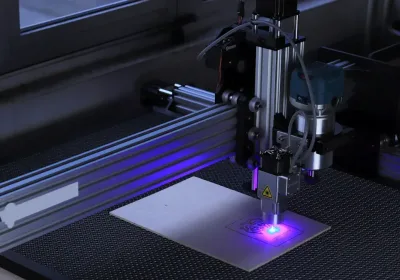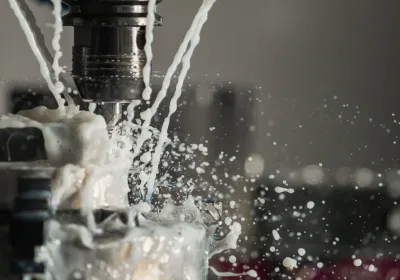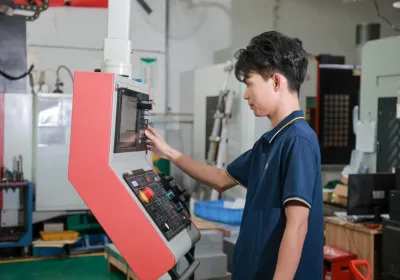
Achieving flat and even surfaces is very important in manufacturing. Flatness means a surface is smooth without bumps or dips. Parallelism checks if two surfaces stay the same distance apart everywhere. These features, like flatness and parallelism, help parts fit well and work properly.
Grinding machine surface technology is key to meeting these needs. For example, studies on ceramic plates show how wear affects accuracy. Keeping grinding machine surfaces precise gives better results, especially for tiny tolerances like 0.3 μm. This accuracy improves product strength, assembly fit, and how well manufacturing works overall.
Key Takeaways
Smooth and level surfaces are important for parts to work well.
Grinding machines make sure surfaces are flat and even.
Taking care of machines keeps them accurate and lasts longer.
How well the operator works affects the grinding quality.
Checking quality often helps avoid mistakes and keeps standards high.
How grinding machines achieve surface precision flatness
Overview of precision grinding technology
Precision grinding is very important in making parts. It helps create flat and even surfaces with great accuracy. This ensures parts fit together and meet strict requirements. Grinding machines use rough tools to scrape off material, making surfaces smooth and exact. These machines can handle small jobs or big industrial tasks.
Grinding machines use advanced systems to give steady results. For example, surface grinders use spinning wheels to remove material bit by bit. This process makes surfaces flat and even, even for tough materials like ceramics or hard steel. Modern grinding machines also have smart controls and sensors. These help adjust settings to improve accuracy and save time.
Mechanisms ensuring flatness and parallelism
Grinding machines make surfaces flat and even in several ways. First, the spinning wheel cuts material evenly, reducing bumps or dips. This keeps the surface smooth and flat. Second, the machine’s table moves steadily. A stable table keeps the part in place, avoiding mistakes.
Advanced systems in grinding machines also help reduce errors. These systems check things like wheel wear, speed, and material hardness. They adjust settings to keep the process accurate. Data analysis also helps predict and fix problems. For example, special math tools like lognormal and Rayleigh models check surface errors and improve results.
Factor Type | Description |
|---|---|
Technological Factors | Limits from tools, devices, and how they are used. |
Economic Factors | Costs and market conditions that affect product prices. |
Grinding Parameters | Changes from blade numbers, wheel wear, and system shifts. |
Deviation Mechanisms | Ways errors build up during grinding, like adding or multiplying. |
Surface Topography | Checking surface bumps and their effect on flatness. |
Statistical Analysis | Using math models to predict and fix surface errors. |
Role of grinding wheels and abrasives
Grinding wheels and rough materials are key for smooth surfaces. Different wheels, like silicon carbide, diamond, and CBN, work for different tasks. Silicon carbide wheels are great for hard materials and fine finishes, like in electronics. Diamond wheels last long and are used in aerospace and medical tools.
CBN wheels are best for grinding iron-based materials. They make smooth surfaces and last a long time. This makes them useful in car-making and metalwork. Picking the right wheel depends on the material and needed precision. The right tool helps make flat, even surfaces with high accuracy.
Importance of table movement and stability
The table in a grinding machine is very important. It holds the workpiece steady while grinding. If the table moves unevenly, it can cause mistakes. These mistakes affect how flat and smooth the surface becomes.
Why Table Movement Matters
The table's movement controls how the grinding wheel works on the material. Smooth motion helps the wheel remove material evenly. If the table shakes or moves suddenly, the surface can end up bumpy. This makes the finished product less accurate.
Think of sanding wood on a shaky table. The wood would turn out rough and uneven. Grinding machines need steady tables to make smooth surfaces.
The Role of Stability
The table's stability stops vibrations and misalignments during grinding. Vibrations can make the grinding wheel jump, leaving marks on the surface. Misalignments can cause uneven grinding, ruining the flatness.
Modern machines have features to keep the table stable. These include strong rails, hydraulic systems, or magnetic holders. These tools help keep the workpiece secure and improve grinding results.
Key Features of a Stable and Well-Moving Table
Here are important features for a grinding machine table:
Smooth Linear Motion: Helps remove material evenly.
High-Quality Bearings: Makes movement smoother and reduces friction.
Rigid Construction: Stops vibrations and keeps alignment steady.
Advanced Control Systems: Lets you change speed and direction easily.
Paying attention to these features ensures precise and flat surfaces.
Tip: Check and clean the table often. Dirt or damage can affect its movement and stability.
Factors affecting flatness and parallelism
Material properties and hardness
The type of material is very important for flat surfaces. Hard materials like steel or ceramics are tough to grind. They resist bending but need more effort to shape. Softer materials, like aluminum, are easier to grind. However, they can bend under pressure, making precision harder.
Materials also react differently to heat during grinding. Metals like copper cool quickly, avoiding warping. But materials like titanium hold heat, which can cause surface changes.
To get flat surfaces, pick materials that suit the machine. Knowing how hard a material is and how it handles heat helps improve grinding. This ensures precise results and tight tolerances.
Machine calibration and alignment
Keeping the grinding machine properly set up is very important. If parts are not aligned, surfaces can turn out uneven. Regular checks make sure the machine stays accurate and works well.
Here are ways to keep alignment:
Use strong fixtures to hold the workpiece steady. This stops vibrations that can ruin accuracy.
Kinematic coupling helps align the machine and workpiece. This reduces errors during grinding.
Secure the workpiece and tools tightly to avoid movement.
These steps help make flat, even surfaces. A well-aligned machine also lasts longer and gives better results.
Environmental conditions impacting precision grinding
The environment affects how well grinding works. Changes in temperature, humidity, or dust can cause problems. For example, heat can make the machine or material expand or shrink. This can lead to uneven surfaces.
Cooling systems help control these issues. Using eco-friendly coolants like liquid nitrogen improves surface quality. These coolants also make parts stronger and last longer.
Keeping the workspace clean is also important. Dust can block the grinding wheel, and too much moisture can cause rust. By managing these factors, you can get better results and maintain precision.
Operator skill and technique
The operator's skill is very important for accurate grinding. Even with modern machines, human expertise is needed for good results. How well you work affects the flatness and parallelism of the surface.
Knowing the Machine
You need to understand the grinding machine you use. Learn its parts, controls, and limits to make better adjustments. For example, setting the wheel speed or moving the table correctly improves accuracy. Practice helps you notice small problems like shaking or misalignment.
Using Proper Techniques
Good grinding techniques are key for precise work. Apply even pressure and move your hands steadily. Uneven pressure can cause bumps, and quick movements may leave scratches. Check the grinding wheel often. A worn wheel can ruin the surface quality.
Tip: Change the grinding wheel if it cuts poorly or wears unevenly. This helps improve the surface finish.
Focusing on Details
Grinding needs careful attention to detail. Measure the workpiece before and after grinding to check if it meets the specs. Use tools like dial indicators or laser scanners for better accuracy. Always double-check your setup to avoid mistakes.
Keep Learning
Learn new grinding methods and tools to improve your skills. Attend classes, read articles, and ask experienced operators for advice. Learning helps you handle new challenges and get better results.
Mistakes to Avoid
Don’t rush the grinding process. Hurrying can cause uneven surfaces or damage the workpiece. Make sure the workpiece is clamped tightly to stop it from moving. Ignoring these steps can harm flatness and parallelism.
Note: Wear safety gear like gloves and goggles to stay safe while grinding.
By improving your skills and techniques, you can achieve great results. Your knowledge ensures surfaces meet strict tolerances and stay flat and parallel.
Importance of surface precision flatness in manufacturing
Impact on product quality and durability
Flat and smooth surfaces improve product quality and durability. Flat surfaces help parts fit together better, boosting performance. For example, in aerospace, laser scanning improved wing flatness. This made planes more aerodynamic and reduced failures. In cars, tighter flatness for engines cut warranty claims by 15%.
Electronics also benefit from smooth surfaces. Keeping a 3-micrometer tolerance for circuit boards increased reliability by 20%. These examples show that precise flatness makes products last longer and work better.
Industry | Case Study Description | Impact on Quality and Durability |
|---|---|---|
Aerospace | Laser scanning improved wing flatness. | Better aerodynamics and fewer failures. |
Automotive | Tighter flatness tolerances for engine parts. | 15% fewer warranty claims for performance issues. |
Electronics | Circuit boards kept at 3-micrometer tolerance. | 20% more reliable products with better signal quality. |
Role in assembly and functionality of components
Precision grinding helps parts fit perfectly during assembly. Flatness and parallelism keep parts aligned and working well. In measuring tools, precise motion systems stop errors in accuracy. For lenses and mirrors, flat surfaces ensure proper alignment and fewer mistakes.
Optical flats help measure surfaces accurately.
Stable motion systems keep sensors and encoders in place. Vibrations can cause errors, so precision grinding ensures reliable assemblies.
Cost implications of poor flatness and parallelism
Ignoring flatness can waste money. Bad grinding increases scrap and rework costs. Advanced tools find problems early, reducing defects and saving time.
In cars, flat engine parts reduce friction and last longer. This lowers repair costs and keeps customers happy. Spending on precision grinding saves money and improves profits.
Less scrap and rework save money.
Advanced tools reduce defects and boost productivity.
Flat engine parts improve efficiency and last longer.
Tip: Check grinding machine surfaces often to avoid costly mistakes.
Best practices for keeping grinding results accurate
Regular care and checks for machines
Taking care of your grinding machine keeps it working well. Clean it often to spot problems like worn-out parts early. Adding oil or grease stops parts from rubbing too much and breaking. Adjusting the machine, called calibration, makes sure it works safely and correctly.
Make a plan to care for your machine. This plan should include cleaning, oiling, and checking its settings. Write down what you do to keep track of its condition. For example:
Clean often to remove dirt that can mess up accuracy.
Add oil to stop parts from getting too hot.
Adjust settings to keep sizes and shapes correct.
Doing these things helps make surfaces smoother and avoids expensive fixes.
Training operators and improving skills
Well-trained workers are important for accurate grinding. Classes teach safety, how to set up machines, and how to use grinding wheels. These lessons also help workers earn certificates to show their skills.
Course Name | Skills Taught | Certification Benefit |
|---|---|---|
Safety, setup, fluids, wheel care, and adjustments | Prepares for NIMS Level 1 Machining certification |
Getting certified makes workers better at their jobs. It also improves product quality and keeps work safer. Learning new skills helps workers do advanced tasks and get better results.
Using modern tools to check flatness and evenness
New tools help measure surfaces very accurately. For example, optical tools use light to check flatness. Atomic Force Microscopy (AFM) shows tiny details for very small measurements. These tools are used in industries like making airplane parts and computer chips, where accuracy is very important.
Some tools now use smart technology like AI to work better. Tools that don’t touch the surface, like optical profilometers, measure without causing damage. These new tools help keep sizes exact and improve surface smoothness.
Using these tools helps meet strict rules and keeps grinding results high-quality.
Implementing quality control processes
Quality control makes sure grinding results stay accurate and reliable. These steps help improve precision and reduce mistakes in manufacturing. By checking and adjusting operations, you can keep high-quality results.
Key Metrics for Quality Control
Tracking important numbers shows how well quality control works. Regular checks find problems and fix them quickly. This keeps processes improving and meeting industry rules.
Evidence Type | Description |
|---|---|
Checks if ESD training and handling rules are followed. | |
Auditing Process | Improves management focus and fixes issues for better results. |
Regular Auditing | Stops problems, finds weak spots, and improves programs. |
Trend Charts and Records | Tracks progress and ensures rules like ISO 9000 are followed. |
Using these tools helps control grinding and improves surface flatness.
Industry Standards for Quality Assurance
Following global standards proves your processes are reliable and trusted.
ISO 9001:2015 ensures quality in precision tools.
Six Sigma reduces defects using math-based methods.
NAAMS gives rules for making car parts consistently.
These standards help you get better results and build customer trust.
Benefits of Quality Control
Quality control cuts waste, saves time, and makes products last longer. Finding problems early avoids expensive fixes and keeps parts accurate. Regular checks keep machines working their best.
Tip: Use charts to track progress and adjust quickly. This keeps precision high and avoids errors.
Strong quality control ensures grinding delivers steady, top-quality results.
Grinding machines are important for making surfaces flat and even. They help parts meet strict manufacturing rules. Setting up machines correctly and controlling vibrations improve accuracy. Regular checks keep machines stable and precise. Choosing the right grinding wheels and using air cooling also helps. Industries like cars and airplanes save money and improve quality with better flatness. Using smart techniques and taking care of machines ensures great results. These steps lead to success in manufacturing.
FAQ
What does a grinding machine do?
A grinding machine makes surfaces flat, smooth, and accurate. It uses a spinning abrasive wheel to remove material. This helps parts meet strict rules for flatness and parallelism.
How can you pick the right grinding wheel?
Choose a grinding wheel based on the material you are working with. For hard materials like ceramics, use diamond wheels. For iron-based metals, CBN wheels work best. Always match the wheel to your precision needs.
Why is it important for the table to stay stable?
A stable table keeps the workpiece steady during grinding. This stops vibrations and misalignments that can make surfaces uneven. Stability improves the product's accuracy and quality.
How does an operator’s skill affect grinding?
An operator’s skill is key to getting precise results. Using proper techniques, like steady pressure and correct settings, ensures flat and parallel surfaces. Training helps operators handle advanced tasks better.
What tools measure surface flatness well?
Tools like dial indicators, laser scanners, or optical profilometers work well. These tools measure precisely without harming the surface. Advanced tools, like atomic force microscopy, are great for very accurate needs.
Tip: Check your tools often to keep them accurate for measurements.
 LKprototype
LKprototype

